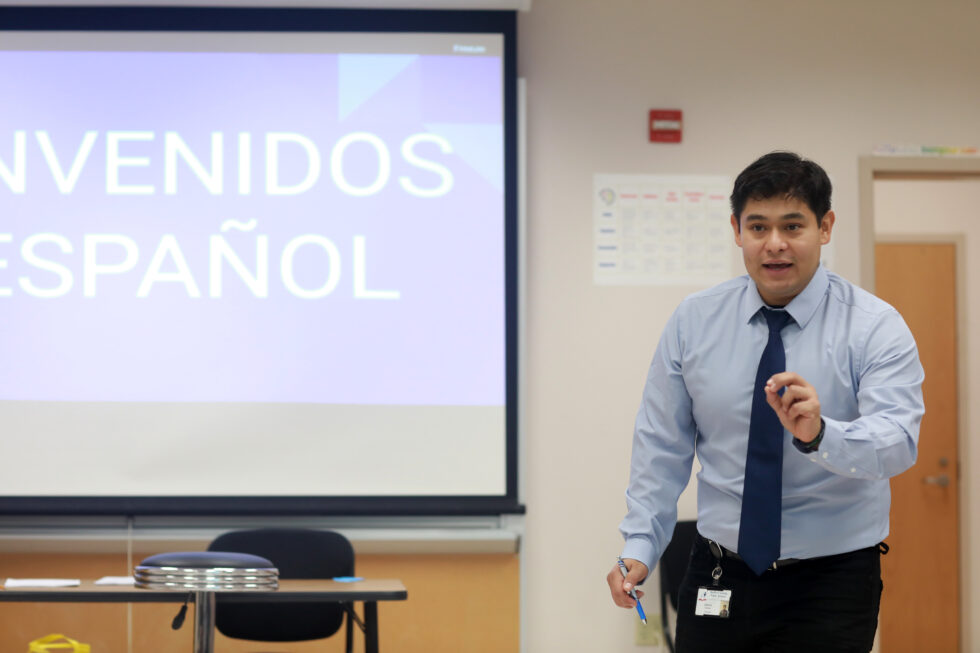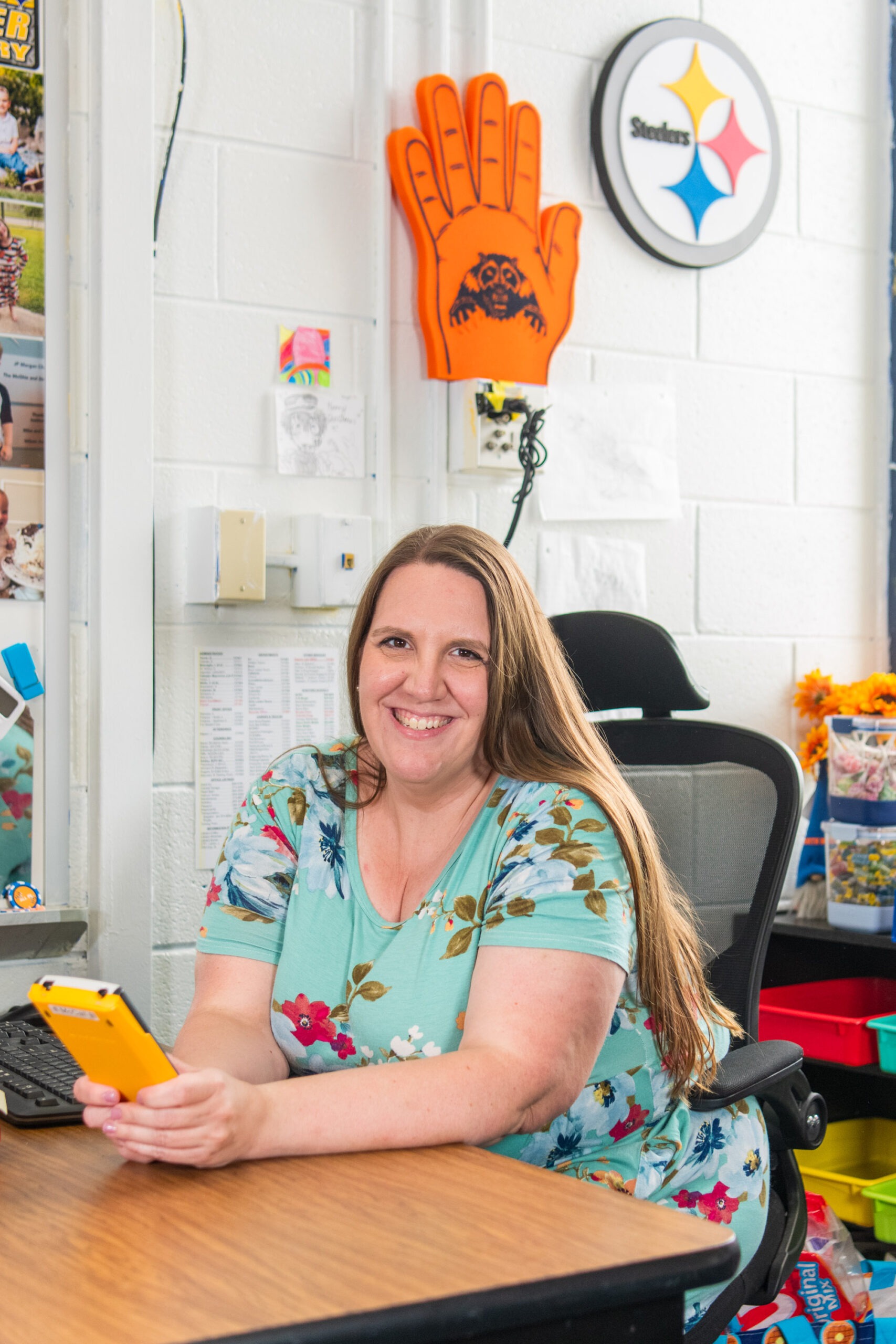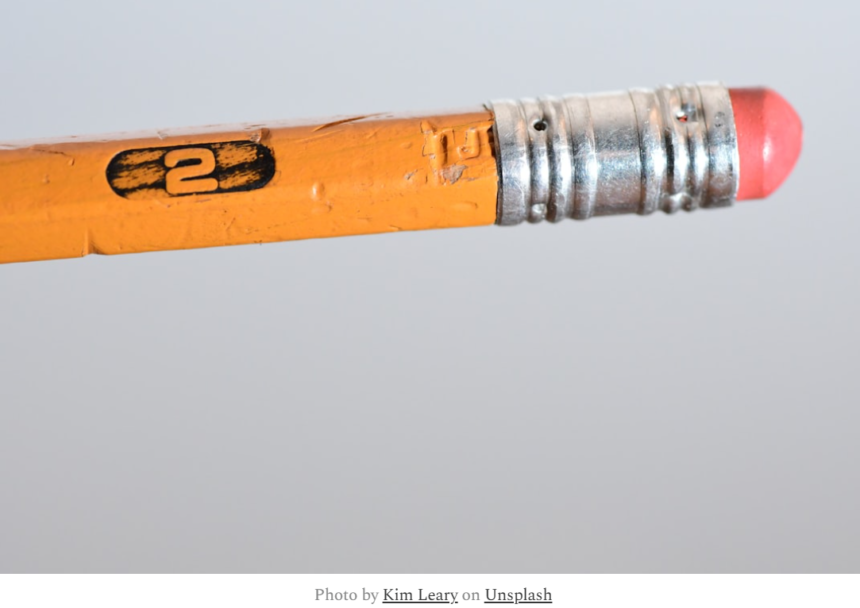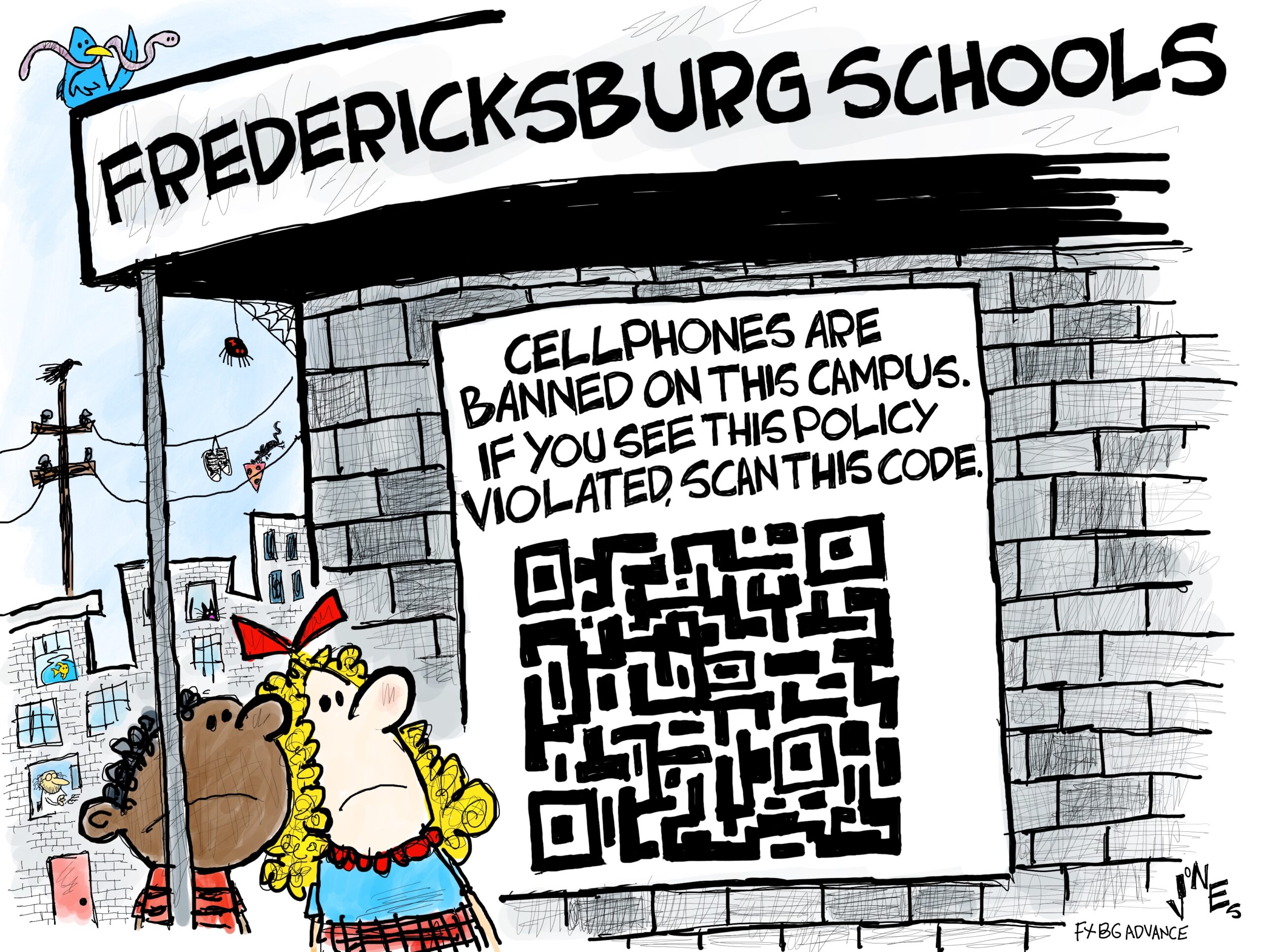
The Academy of Technology and Innovation at the University of Mary Washington opened its doors this week for its first cohort of 9th graders.
There are no desks in Spanish teacher Michael Arriaza’s classroom at the newly opened Academy of Technology and Innovation at the University of Mary Washington.
At his request, there are only black rolling office chairs—and on Thursday morning, Arriaza’s 9th-grade students weren’t even in the four-walled classroom at all. They were in one of ATI’s large, open multipurpose spaces—in this case, a converted graduate library—doing a scavenger hunt for Arriaza’s favorite colors.
“He is all about getting the kids up and moving while they learn,” said Rebecca Towery, executive director of ATI, a regional lab school for students in grades 9-12 that opened on Monday for its inaugural year.
In his computer science class—a mandatory elective for ATI students—instructor Jason Wong was preparing to teach the kids how to write their names in binary code. His students will also soon be programming small single-board computers and, in the spring, will partner with the environmental science class to fly drones to measure pollution levels.
Students in William Schlotter’s science class were conducting an experiment with clothespins—squeezing them in 30-second rounds to measure lactic acid build-up in their fingers.
Innovative, hands-on, project-based learning experiences like these are one of the pillars upon which ATI is being built, Towery said. It’s the first regional lab school to open in the Fredericksburg area, spurred by the Virginia General Assembly’s 2022 approval of $100 million to support the development of lab schools in the state.
Lab schools are public, nonreligious schools established by a public institution of higher education to stimulate the development of innovative education programs for K-12 students.
UMW applied for and received a $200,000 planning grant and a $1 million startup grant to launch ATI, which this year welcomed students from Fredericksburg City and Stafford, King George, Caroline, and Orange counties.
There are 82 students in the first-year cohort of freshmen, Towery said. Each participating school division received a certain number of slots based on its size relative to the area’s total public K-12 student population.
In the first-year class, 60 students come from Stafford schools, seven each from King George and Fredericksburg schools, and five each from Caroline and Orange schools. (The Spotsylvania School Board voted in November of 2023 not to participate.)
In four years, enrollment should be around 400 students in grades 9-12.
Interested students applied to a lottery system, which was run through Stafford County Public Schools, the fiscal agent for the new lab school. Towery said about 200 students applied.
She was nervous that there would not be enough diversity among applicants, but the first-year cohort includes students who are identified as gifted, special education students, English language learners, and students of multiple races and ethnicities.
The curriculum involves core classes such as science, math, and humanities (combined English and history), and electives that currently include world language, environmental science, art, and sociology and global issues.
Computer science is a mandatory elective, and Towery said some of the students “definitely geek out” over the tech emphasis.
For others, it wasn’t the main draw, but the goal of ATI is for students to learn coding, data science, and other technology-based marketable skills through the lens of whatever they are passionate about—be it music, art, history, politics, or world languages.
“COVID showed us that we were not preparing students and teachers for 21st century learning,” said Stephanie Burchett, ATI’s assistant director.
Burchett worked as an assistant principal at Gayle Middle School in Stafford County last year. She said she moved to ATI for “the opportunity to see students learning differently.”
That’s also what attracted Wong, who came from Fredericksburg City schools. He’s a career-switcher who came to teaching after working as a software engineer, and he said he was intrigued by the chance to facilitate small-group, project-based learning.
ATI’s teachers spent three weeks preparing to open the new school. Part of that time was spent completing a three-day professional development course offered by the Buck Institute for Education, which Towery said is the expert in project-based learning.
“All teachers came out of that having drafted a [project-based learning] unit,” she said. “We’re excited to see what they came up with.”

ATI is housed in one of the two buildings that make up UMW’s Stafford Campus. The school will be using the $1 million start-up grant over five years to make improvements to the building.
In preparation for this launch, the building’s 25-year-old internet cabling was gutted and replaced, safety modifications were made, and the interior was repainted and recarpeted.
“We’re [also] in the process of putting together a Maker Space,” Towery said, and plans for next summer include installing a full science lab.
The experience of the first-year students and teachers will also guide future plans for the physical building and the curriculum, she said.
On Monday, Gov. Glenn Youngkin will participate in a ribbon-cutting for a second Central Virginia area lab school—the Future Educators Academy, an early college academy focused on preparing early- and special education teachers and housed at Germanna Community College’s Daniel Technology Center in Culpeper.
FEA is a partnership between Germanna, Laurel Ridge Community College and James Madison University, and serves students in Culpeper, Orange, Madison, Rappahannock, Clarke, Fauquier, Frederick, Page, Shenandoah, and Warren counties and the City of Winchester.
By Adele Uphaus
MANAGING EDITOR AND CORRESPONDENT
Email Adele





